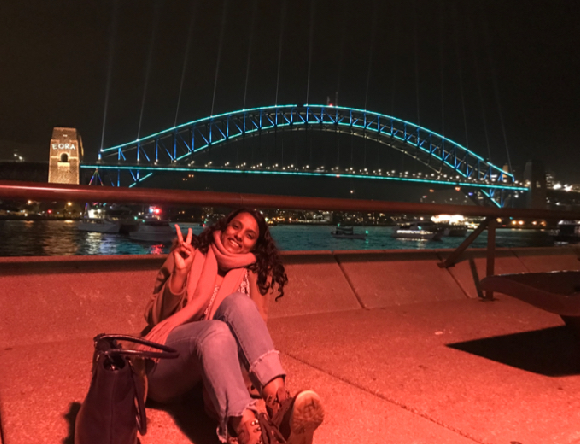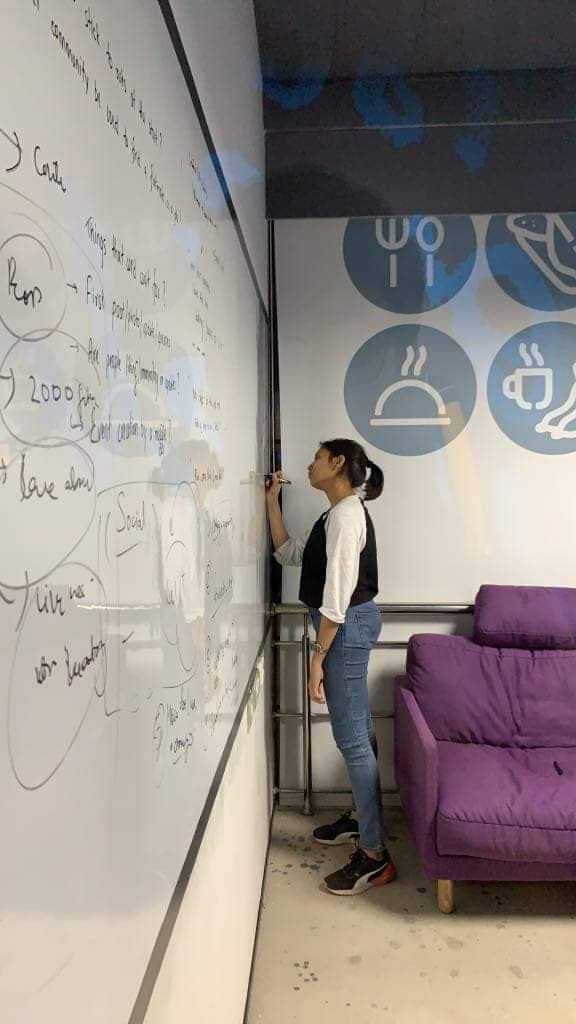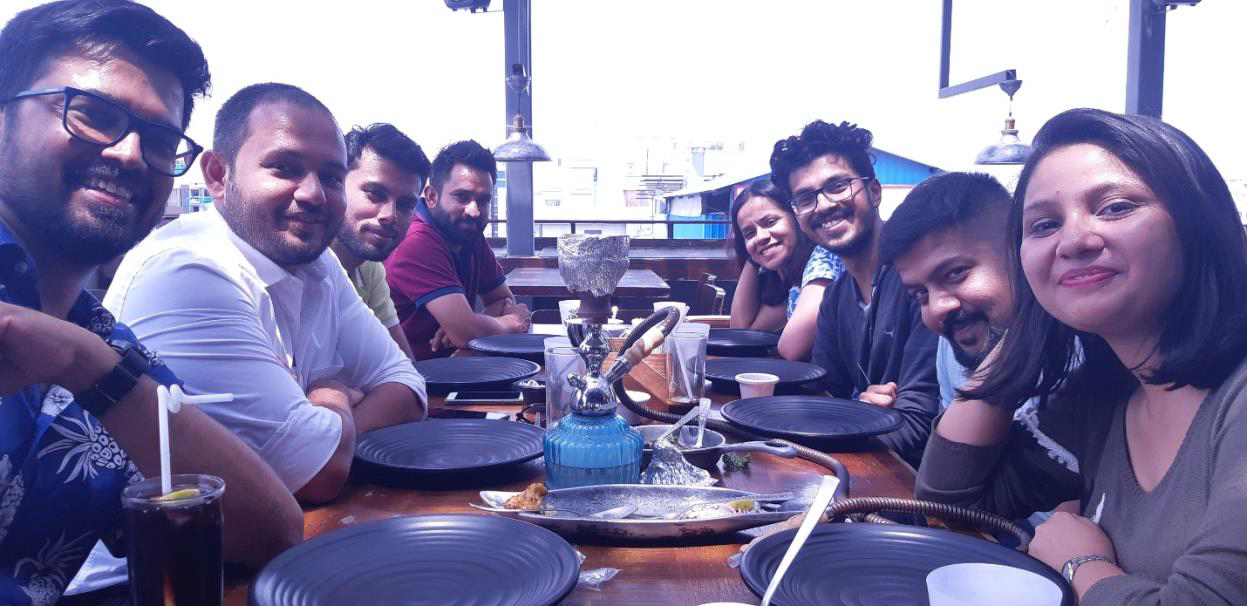

Body of IITR

I spent my summers at Cure.fit, bangalore as a product design intern. In this article I’ll try to summarise my experience of the same.
Cure.fit is a heath and fitness start-up. It was founded by Mukesh Bansal (ex-founder, Myntra) and Ankit Nagori (ex-chief business officer, Flipkart). Founded in 2016, it’s one of the fastest growing start-ups in the country today.
My story of making it to Cure.fit consists of two parts:
Deciding to apply
Applying
The second part was fairly straight forward. The first part, however, was tougher. Let’s start with the simpler bit.
Most startups don’t have a formal internship programme. There are only two ways to apply to a startup – email your resume to them or send a LinkedIn message to someone in that company who is working in your field of interest.
A typical email would consist of a cover letter, your resume and a link to your blog/dribble/github/LinkedIn or any other platform you chose to use for the purpose of documenting your projects.
A typical LinkedIn message would be shorter, crisper and less formal. It’s contents would vary according to your purpose. You could ask about the availability of internship opportunities, or about how you should go about approaching the company (who you should contact, what medium you should use), you could directly send your portfolio if you feel that it’s relevant for the person you’re communicating with and you can even text them to ask for general career related guidance.
Coming back to the application process, I sent emails to around 30 start-ups in India. Cure.fit was the first company to respond. I had a telephone interview which lasted for about 40 mins during which I was tested in basic problem solving. Towards the end of the interview I was told that I had cleared it and they invited me over for an internship at their Bangalore HQ.
Side note: Different start-ups have different ways of assessing candidates. Some give you assignments to solve—some have multiple interview rounds. Even the same company assesses different candidates differently. What start-ups basically try to gauge while assessing you is whether or not you fit into their “criteria” and they continue to test you until they are convinced one way or the other. The criteria, again, varies from company to company and can include anything from skill set to personality traits. Therefore, don’t take rejection personally. It’s a good idea to talk to someone who’s already worked there, it really helps in getting into the groove and understanding what the culture of the company is like and what they stand for. Also, before appearing for an interview, you should have a fairly good idea about their product, and your reason for applying to their company.
Tips for the interview:
Think out loud. Don’t just give them the final answer. They are way more interested in how you arrived at that answer.
Don’t fake it. It’s not a good idea for two reasons :
They usually see through it.
It’s a bad deal for both you and the company because at the end of it they will be stuck with someone they did not sign up for and you will always have to try to conform to that fake image they hired.
Don’t be afraid to accept that you’re wrong and be eager to learn. They are well aware of the fact that as an internship applicant you don’t have one-fifth the knowledge or experience that their regular employees have. It is, therefore, really important to them that you’re not stubborn about your solutions, are willing to accept your mistakes and are eager to learn because that way it’ll be easier for them to teach you and in turn easier to get an output out of you.
Now, this is the tricky part. Squaring in on a field you wish to intern in is, in my opinion, one of the toughest things you have to do in college (So many options—very little time! ) But it’s also kinda fun, like a rollercoaster ride makes you very queasy in the gut sometimes but gives you an exhilaration like nothing else all the other times. I won’t get into the details of my story for two simple reasons:
It’s long, complicated and boring.
It’s irrelevant. No two journeys are the same. And that’s the way it should be.
I will, however, share with you things that helped me:
Reading. Medium blogs, books, anything and everything. The book that had the most important role in this journey was Steve Jobs by Walter Isaacson. It taught me, among a lot of other things, how important a good design was to build a great product and how a great product can create a huge, life altering impact on the world.
Talking to people. Anybody and everybody. Whoever you find interesting or whoever you feel can help you answer questions that are bothering you. It doesn’t matter if you know them or not. Just text them and ask them out for coffee (Please be polite, make your intentions clear and don’t creep people out) or ask a common friend to introduce you and then, have a conversation. Don’t attack them with your questions but don’t be scared or ashamed to ask wherever you have doubts. In fact, Roorkee is a little like Hogwarts. Help will always be provided to those who ask for it.
I worked on two main projects – one pertaining to product design and another one pertaining to product management (I had taken up the second one voluntarily)
The first project involved improving the existing user experience for an EMR (Electronic Medical Record) system for doctors. This project involved Visual design, UX design, user research and basic usability testing.
The second project didn’t involve as much ‘management’ as it involved brainstorming and research.
For those of you who don’t know, a product develops in stages (for a strictly digital product the stages are broadly- conceptualization, design and development. Other stages come in when the product also has operational and other requirements) and a product manager is a part of all these stages. It’s a myth that product managers only boss people around or only need to manage people. A product manager does everything from people management to minute design iterations. He or she basically responds to the need of the product at any given stage and in any possible way.
My product was in its conceptualization stage. The company had a faint idea that there existed a particular market need (can’t delve into specifics because it’s still in the works) and that there existed a possibility that they could cater to it and expand their user base in the process but they weren’t quite sure how feasible the whole idea was. My job was to figure out what exactly this market need was and how acute it was and what we could do in order to cater to it. In order to do this I conducted user research (basically, identified the categories of users that needed to be spoken to in order to gain insights, drafted a questionnaire for each category and then called them up individually) and had multiple brainstorming sessions with my mentor. This was probably the most interesting project I’ve ever worked on.
Cure.fit takes immense pride in its flat organisational structure. There are no bosses. Everyone is free to speak out. Curiosity is encouraged and openness to feedback is highly appreciated.
As an intern, I think the most rewarding aspect of the culture there was that I could go and talk to anyone, about anything and ask as many questions as I wanted. The cherry on the cake was that they were only too happy to help me and never made me feel like my questions were dumb or that my opinions were not as important as those of the employee sitting next to me and mentoring me.
There were also a lot of fun days. Especially the cricket match days during the World Cup. Everyone would take their laptops to the terrace garden and watch the match together on a huge screen and cheer for India while gorging on unlimited beer and food.

The design team. They’d almost become family to me by the time I left.
This was my first ever internship and I didn’t really know what to expect but to be honest, I don’t think it could’ve gotten better than this. One piece of advice to anybody out there, especially the first and second years:
A lot of you may feel overwhelmed, intimidated even, by the sheer number of cryptically named career options out there. I know I was and still am. It’s never completely clear which profession entails what kind of work and whether or not that work will interest you. One very effective way to get a better understanding of what different corporate job profiles entail and how they come together to actually make organisations work is to intern with a start-up. As early on in your journey as possible. Most start-ups have a very flexible work environment. You are given immense autonomy, a lot more than most established companies. You can go around absorbing as much information as you want and volunteering for projects in different departments. It’s an extremely enriching experience.
That’s all from my side. Please feel free to contact me in case of any questions. You can also ping me for a random conversation. A good conversation is always fun.